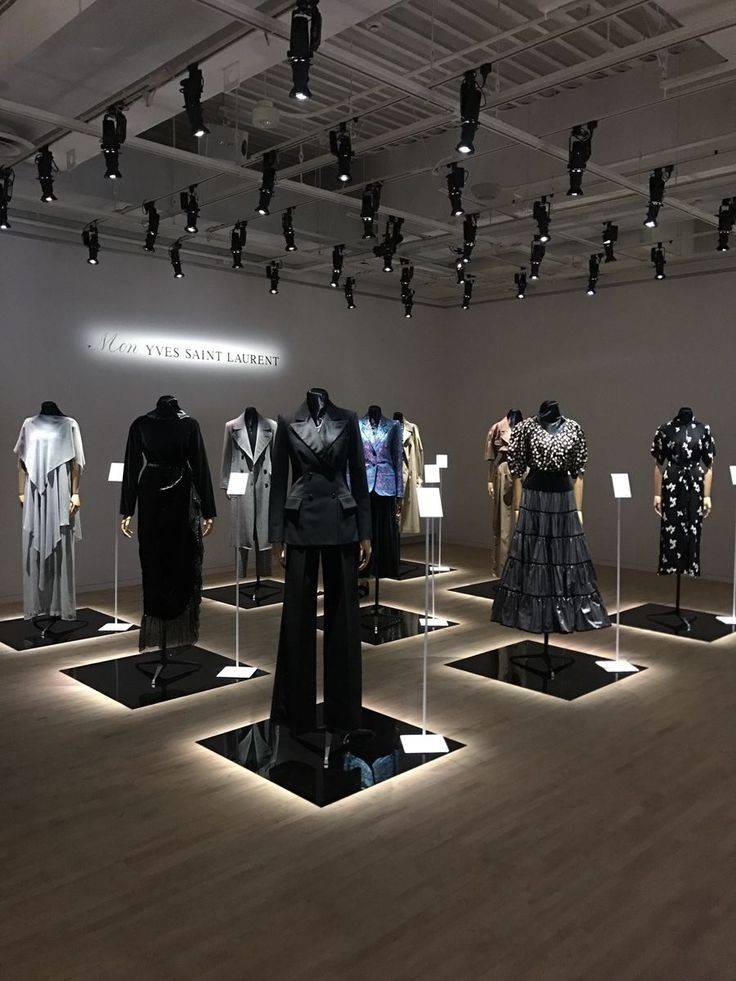The Rise of Sustainable Fashion: How Eco-Friendly Clothing Is Changing the Industry
In the last decade, the fashion industry has experienced a significant shift towards sustainability. What was once a niche interest for a small, environmentally-conscious group is now rapidly becoming a mainstream movement. As climate change continues to affect our planet and consumers become increasingly aware of the environmental damage caused by fast fashion, the demand for sustainable fashion options has grown.
Sustainable fashion refers to clothing, shoes, and accessories that are produced and consumed in ways that are eco-friendly, socially responsible, and economically viable. This movement aims to reduce the negative impact of the fashion industry on the planet, and it involves several strategies, including eco-friendly materials, ethical labor practices, waste reduction, and innovative business models. In this article, we will explore the rise of sustainable fashion, how it is changing the industry, and why it's essential for the future of fashion.
The Environmental Impact of Fast Fashion
Before delving into the rise of sustainable fashion, it’s important to understand the environmental and social issues that have spurred this shift. The traditional fashion industry is infamous for its contribution to pollution, waste, and exploitation of resources. In fact, the fashion industry is one of the largest polluters in the world, responsible for around 10% of global carbon emissions, more than international flights and maritime shipping combined.
The fast fashion model, which prioritizes producing inexpensive, trendy clothing at rapid speeds, has exacerbated these problems. Clothing is often made using non-biodegradable synthetic materials like polyester, which takes hundreds of years to decompose. Additionally, the production of these materials often requires large amounts of water, chemicals, and energy, leading to deforestation, water pollution, and harm to local ecosystems.
Furthermore, fast fashion companies typically rely on cheap labor in developing countries, where workers may face poor working conditions, low wages, and human rights abuses. This model has created an unsustainable cycle where clothing is mass-produced, consumed quickly, and discarded after only a few uses. As a result, millions of tons of textiles end up in landfills every year, further exacerbating the global waste crisis.
What is Sustainable Fashion?
Sustainable fashion seeks to address these issues by focusing on creating clothing that is better for the environment and people. It involves several key practices:
1. Eco-Friendly Materials: Sustainable fashion brands prioritize using natural, organic, and renewable materials such as organic cotton, hemp, bamboo, and Tencel. These materials require fewer resources to produce and have a lower environmental impact compared to conventional fabrics. Some brands even use recycled materials like ocean plastic or discarded clothing to create new products, reducing the demand for virgin materials.
2. Ethical Labor Practices: In addition to environmental concerns, sustainable fashion also considers the welfare of workers. Brands that embrace sustainable fashion often ensure fair wages, safe working conditions, and ethical labor practices in their supply chains. By supporting fair trade and transparent manufacturing processes, sustainable fashion aims to protect workers' rights and support communities.
3. Waste Reduction: One of the core principles of sustainable fashion is reducing waste. This can be achieved by producing clothing in smaller batches, focusing on quality over quantity, and encouraging consumers to buy fewer, higher-quality items that last longer. Some brands also embrace the circular economy by offering repair services, reselling pre-owned items, or using recycling programs to reduce the amount of clothing that ends up in landfills.
4. Slow Fashion: In contrast to the fast fashion model, slow fashion focuses on creating timeless pieces that transcend trends. Slow fashion brands emphasize durability, quality, and long-term value, encouraging consumers to invest in clothing that will last and remain stylish for years to come. By purchasing fewer items and valuing longevity, consumers can reduce their overall environmental footprint.
The Growth of Sustainable Fashion
The rise of sustainable fashion is a response to the increasing awareness of environmental issues and the growing demand for ethical alternatives. Several factors have contributed to the growth of the sustainable fashion movement:
1. Consumer Awareness: Over the past decade, consumers have become more educated about the impact of their purchasing decisions on the environment and society. Documentaries like The True Cost (2015) have shed light on the human and environmental costs of fast fashion, motivating many consumers to seek out sustainable alternatives. With the power of social media, consumers can now easily share information about ethical brands, making it easier for others to make informed choices.
2. Celebrity Endorsement: Celebrities and influencers have played a significant role in promoting sustainable fashion. High-profile figures like Emma Watson, Leonardo DiCaprio, and Stella McCartney have publicly supported eco-friendly fashion brands, helping to elevate the movement and make sustainability more mainstream. By choosing to wear sustainable clothing on red carpets and in their daily lives, celebrities have helped shift the conversation around fashion and its environmental impact.
3. Innovative Technology and Materials: Advances in technology and materials science have made it easier for brands to create sustainable clothing at scale. For example, new innovations in fabric production, such as plant-based leathers and biodegradable textiles, are allowing fashion companies to produce items that are both environmentally friendly and stylish. In addition, the rise of digital fashion, such as virtual clothing and online "try-ons," is opening up new possibilities for the industry without the need for physical production.
4. Regulations and Policies: Governments around the world are increasingly implementing regulations that promote sustainable practices in the fashion industry. For example, the European Union has introduced new regulations aimed at reducing waste and promoting circular fashion. Additionally, some cities have implemented "extended producer responsibility" laws, requiring fashion brands to take responsibility for the end-of-life disposal of their products.
Key Players in Sustainable Fashion
Several brands and designers have emerged as leaders in the sustainable fashion movement. These companies are setting the standard for what it means to create fashion that is both stylish and eco-conscious. Some of the key players include:
1. Stella McCartney: One of the pioneers of sustainable fashion, Stella McCartney has long been a champion of ethical fashion. Her brand has consistently used cruelty-free and eco-friendly materials, such as organic cotton and recycled polyester, while also prioritizing ethical labor practices. McCartney’s commitment to sustainability has helped her brand gain a loyal following among fashion-conscious consumers.
2. Patagonia: Known for its commitment to environmental activism, Patagonia has integrated sustainability into every aspect of its business. The brand uses recycled materials in its clothing, encourages customers to repair and reuse items, and donates a portion of its profits to environmental causes. Patagonia’s dedication to sustainability has made it a favorite among eco-conscious consumers.
3. Reformation: Reformation has built a strong reputation for producing stylish, eco-friendly clothing. The brand uses sustainable materials like organic cotton and recycled fabrics and practices water-saving techniques in production. Reformation’s commitment to transparency, sustainability, and inclusivity has made it a popular choice for millennials and Gen Z consumers.
4. Everlane: Everlane’s mission is to provide high-quality, affordable clothing with transparency in pricing and sourcing. The brand is committed to using sustainable materials, such as organic cotton and recycled fabrics, and ensures that its factories meet fair labor standards. Everlane’s "radical transparency" approach allows consumers to see exactly where and how their clothes are made, further solidifying its commitment to ethical fashion.
The Challenges Ahead for Sustainable Fashion
While the rise of sustainable fashion is a positive development, there are still several challenges to overcome:
1. Price: Sustainable fashion tends to be more expensive than fast fashion due to the higher cost of eco-friendly materials, ethical labor practices, and smaller-scale production. This can make sustainable clothing less accessible to budget-conscious consumers, although prices are expected to decrease as the demand for sustainable fashion grows.
2. Greenwashing: Some brands may attempt to capitalize on the sustainable fashion movement by claiming to be eco-friendly without making significant changes to their practices. This phenomenon, known as greenwashing, can make it difficult for consumers to distinguish between truly sustainable brands and those simply using the "green" label for marketing purposes.
3. Supply Chain Complexity: The fashion industry’s supply chain is highly complex, involving multiple steps and stakeholders, which can make it difficult to track the sustainability of every aspect of production. Ensuring transparency and accountability across the entire supply chain remains a challenge for many brands.
4. Consumer Behavior: Despite the rise of sustainable fashion, many consumers continue to prioritize affordability and convenience over sustainability. Changing consumer behavior and encouraging people to embrace slow fashion and quality over quantity is essential for the long-term success of the movement.
Conclusion
The rise of sustainable fashion is a positive shift in the fashion industry, with significant benefits for both the environment and society. As consumer awareness grows and brands continue to innovate, the future of fashion looks more sustainable than ever. While challenges remain, the increasing popularity of sustainable fashion suggests that we are moving towards a more conscious and responsible approach to clothing production and consumption.
By supporting sustainable fashion brands and making more informed choices, consumers can play an important role in driving the industry towards a more sustainable future. The fashion industry is at a crossroads, and it’s up to all of us—consumers, designers, and brandnds—to ensure that sustainability remains at the forefront of the fashion revolution.


